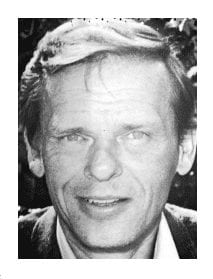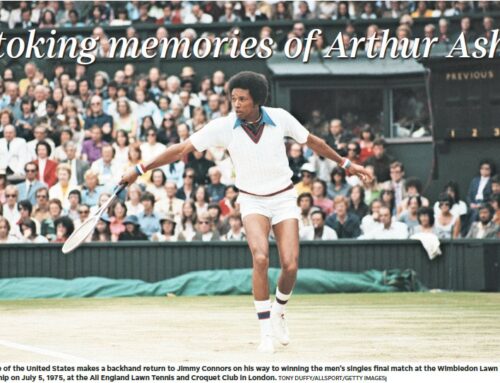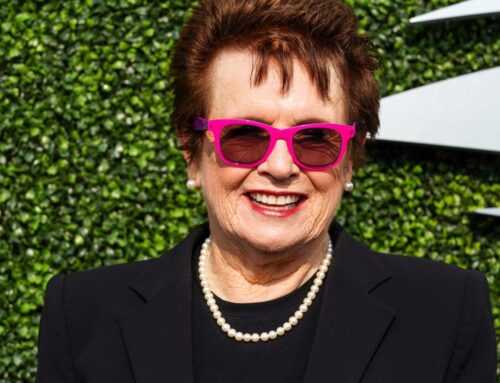 The Wimbledon fortnight began month with Novak Djokovic and Serena Williams psyched to show why they’re shoo-ins for selection into the International Tennis Hall of Fame (ITHF). Players gain entry into tennis’ hallowed home based on their on-court career achievements.
The Wimbledon fortnight began month with Novak Djokovic and Serena Williams psyched to show why they’re shoo-ins for selection into the International Tennis Hall of Fame (ITHF). Players gain entry into tennis’ hallowed home based on their on-court career achievements.
The game’s top coaches and executives are enshrined in the ‘contributors’ wing of the Newport, RI-based facility and are honored for “Exceptional contributions that have furthered the growth, reputation and character of the sport in categories such as administration, media, coaching and officiating.”
Some contend that the late Gene Buwick, a Wilson Sporting Goods executive who played a key role in the development of the modern game, has been overlooked. While the game’s top pros do battle on Wimbledon’s prestigious grass courts outside, the ITHF’s Enshrinee Nominating Committee will gather in a conference room at the Wimbledon complex to determine if Buwick will be among the chosen few to receive further consideration. The induction process takes up to 10 weeks.
Tennis legend Billie Jean King is among Buwick’s supporters. “I don’t know if I would be where I am today if it weren’t for him,” King says.
Though employed by Wilson for more than 30 years, Buwick worked for the good of the game. In 1973, the United States Tennis Lawn Tennis Association (USLTA) named him the Executive Director of its first Professional Tennis Council. Buwick assembled an eclectic list of accomplishments that enhanced the quality of the professional game. Among other things, he:
* pioneered the practice of providing top players with racket endorsement deals. Jack Kramer and Tony Trabert were among the first players to have their names etched on Wilson rackets. Today, the game’s top players earn millions of dollars, endorsing rackets, shoes, clothes, etc. Buwick developed Wilson’s strategy to recruit and market player talent.
* signed Billie Jean King in 1967 to the first racket endorsement for a woman player. Years later, Wilson launched the Chris Evert autographed model.
* oversaw the U.S. marketing of the first non-wood racket, the Wilson Model T2000, used by King and Rosie Casals at the 1967 Wimbledon. King won the singles title and teamed with Casals to win the doubles crown. Jimmy Connors collected many of his 109 record titles, playing with the T2000.
* facilitated an agreement between Kramer and PepsiCo, Wilson’s parent company, to develop and finance the first International Grand Prix of Tennis. He also helped arrange television sponsorship for World Championship Tennis (WCT) circuit and for the Satellite Tennis Circuit, which allowed young players to compete against more seasoned pros on a minor league circuit.
* helped develop the first professional umpires association. Buwick hired Mike Blanchard as the official referee of the WCT and Women’s Tennis Association (WTA) circuits. Blanchard and several assistants were hired by Wilson to organize officiating clinics in mid-sized U.S. cities and were sent to Japan, Saudi Arabia and other countries to help structure universal standards.
* oversaw the technical research that led to the use of yellow balls for better television visibility. The yellow balls were first used in 1972, but didn’t receive the blessing of the International Tennis Federation (ITF) until 1986.
“If you are a teaching professional, a journeyman tour professional, or a world class player, a deep amount of gratitude is owed to (Buwick), who left his indelible fingerprints on the game of tennis,” said Trabert, a 1970 Hall of Fame inductee.
In a video shown at Buwick’s Wilson Hall of Fame induction (2000), Kramer praised Buwick, who died in 2004, and the company for their contributions to tennis. “They did more than just try to sell rackets; they tried to sell the game,” Kramer said. “They helped the sport grow tremendously.”
In the late 1940s, tennis stepped gingerly into the professional ranks, thanks to barnstorming tours, featuring Kramer, Pancho Gonzales, Bobby Riggs, Pancho Segura and other top players of that era. Twenty years later, the governing bodies of tennis worldwide lifted its ban of professional players and ushered in the Open Era, offering prize money at every event.
Now, the sport, once dubbed ‘the rich man’s game,’ has morphed into a multi-billion dollar global industry. It is anchored by lucrative international television pacts that feature superstar pros competing year-round in multi-million dollar tournaments/events, including the four majors – Australian Open, French Open, Wimbledon and the U.S. Open.
“Gene was the go-to person, who facilitated the growth and prestige of tennis during one of the most important eras of the game,” said Vaughn Baker, who joined Wilson during the early of the Open Era.
John Embree, CEO of the United States Professional Tennis Association, concurs. “I began working for Gene in 1986,” Embree says. “He had an exceptional eye and feel for marketing. Before I worked for him, I knew that when the U.S. Open moved from Forest Hills to Flushing Meadows in 1978, a key element of Wilson’s deal with the USTA was that Wilson’s stadium box seats would be directly in front of the cameras that would show the players as they were serving. From that angle, behind the service line, right behind the server, television viewers worldwide would see the server, the receiver and the Wilson signage in the background. We had the best seats in the house! Gene was proud of that deal, but he’d always deflect the credit to someone else.”
Baker adds: “He never wanted the spotlight. His philosophy was ‘to do what is good for tennis and you will get your fair share.”
Buwick learned to love the game as a Chicago teen, and later served as captain of the University of Illinois’ (Champaign) varsity team. He gave lessons to youngsters, including King, when she was 10.
“I hit with him every Saturday morning,” King says. “He was a sixth grade teacher In Long Beach (CA) back then. He continued to help me when he took the job with Wilson. He provided me with free rackets and financial assistance and helped other young players whose parents couldn’t always afford to pay tournament entry fees. He helped pay for my first trip to Wimbledon.”
Two years ago, Wilson named Buwick’s son, Tim, as U.S. Promotions Director for Racquet Sports, the same position his father held for more than 30 years. Though Tim had worked for Wilson as a territorial manager for 25 years, the move was unexpected.
“My dad would be shocked because I was the family rebel,” Tim says. “I wasn’t at all interested in getting involved in the corporate jungle, but it all fell into place. It’s been somewhat of a surreal experience. You can’t imagine the number of times I’ve heard his voice in my head and I’d say, ‘Gosh, I wish my dad was alive so I could talk to him.’ He had a great sense of humor and a way of connecting with people. He was the ultimate politician and I mean that in a positive way.”





Leave A Comment